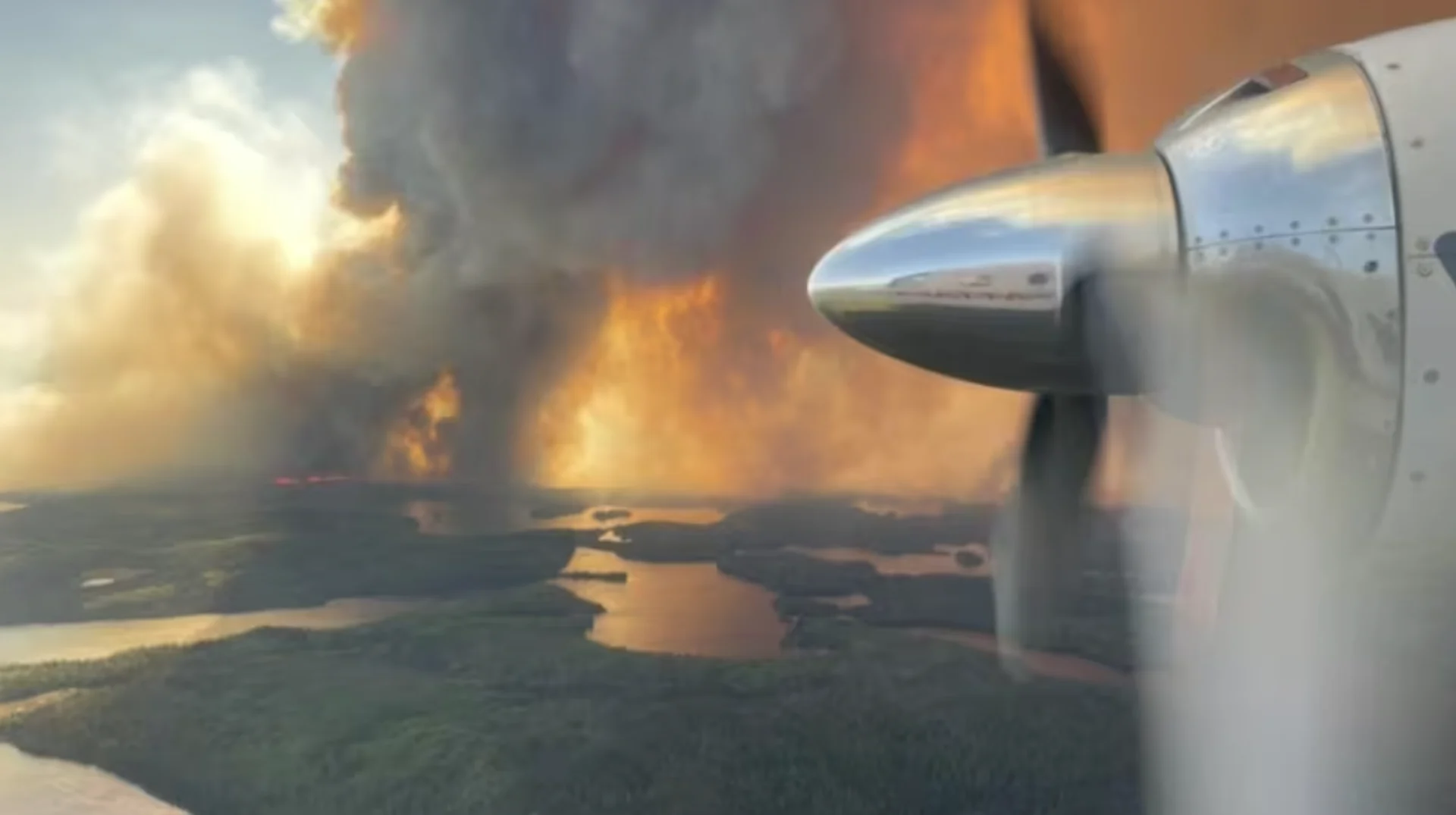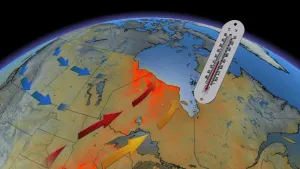
Evacuations in Fort Albany, wildfire threatens power line in Ontario's far north
Visit The Weather Network's wildfire hub to keep up with the latest on the active start to wildfire season across Canada.
Fort Albany continues to evacuate with a wildfire still burning out of control dangerously close to the community on northern Ontario's James Bay Coast.
About 500 people who were rushed out as the fire spread toward the First Nation on Wednesday have now been taken to hotels in the towns of Kapuskasing and Val Rita.
The 200 or so who remain in Fort Albany started to be airlifted out on Thursday evening.
ALSO READ: Northern Ontario is hotter than Florida, claiming Canada’s hot spot
Deputy Chief Terry Metatawabin says one of the big concerns now is how close the flames are to the hydro line that brings electricity to Fort Albany, as well as the communities of Kashechewan and Attawapiskat.

Thick smoke is blanketing Fort Albany, as well as the nearby community of Kashechewan, which wants to evacuate elders, children and others with breathing problems. (Ashlynn Ashamock/Facebook)
"So the situation is still serious," he said in a Facebook live video Thursday night.
"So we just ask for your prayers for this fire crew that's literally, literally fighting the fire right now to make sure that power line does not get disrupted. If it comes any closer, we would have to shut the power off."
Heavy smoke continues to blanket Fort Albany and the nearby Kashechewan First Nation, where Chief Gaius Wesley says everything is "orange."
He is hoping to evacuate elders, children and others having a hard time breathing, while not taking airplanes away needed to get people out of Fort Albany.
"We need a lot of planes. And we also need military air support to move our people away from our communities. And it's been very slow," said Wesley, adding that the federal and provincial governments are "doing the best they can" to help.
WATCH: Wildfires in Canada have burned more land than all of Costa Rica
The Ontario Ministry of Natural Resources and Forestry has ground crews working the 300-hectare fire near Fort Albany, as well as water bombers and a newly arrived heavy helicopter, but the weather forecast continues to work against them.
"As the temperatures are still expected to be well above the 30 degree mark, over the last few days we know that certain areas in the far north had temperatures upwards of 45 degrees with the humidex which is quite warm," said fire information officer Isabelle Chenard.
"So that played a role in increasing that fire behaviour."
Thumbnail image courtesy of the Ontario Ministry of Natural Resources and Forestry via CBC News.
This article, written by Erik White, was originally published for CBC News.









